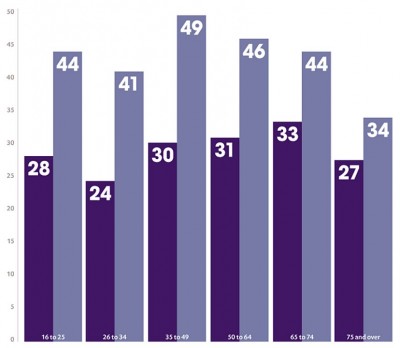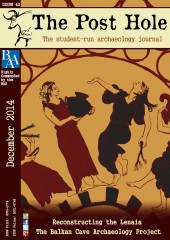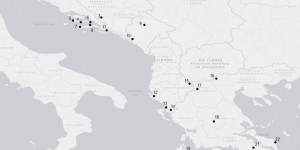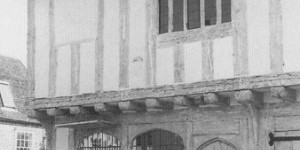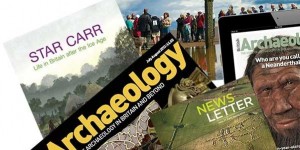Did you know that an estimated 15.2 million people volunteer at least once a month in the UK alone? A huge 22,500 organisations across the UK are dedicated to culture, heritage, art and recreational sectors . This is not taking into account the ample opportunities to get involved in excavation and post excavation analysis. Most archaeology enthusiasts will have volunteered on digs, however in these colder months I wanted to talk about different ways of engaging with archaeology and heritage as a volunteer, whilst keeping warm at the same time! The demography for volunteering is incredibly varied as figure 1 indicates, using age as an example. Studies such as this one, undertaken by Community Life Survey for 2012-2013, show that volunteering is something all sorts of people can get involved with, and with such a large amount of different institutions relying more and more on the voluntary workforce, particularly in the heritage and culture sector, there is no excuse to not get involved!
I would like to begin by reflecting on some of my own experiences as a volunteer, which have genuinely changed the shape of my academic path and personal enthusiasms. I am lucky enough to live just a few miles away from the Palaeolithic site of Creswell Crags. I grew up regularly walking around the gorge and exploring the caves here, often playing games with my friends where we would pretend we were residents of the caves ourselves! It was at Creswell Crags where I was privileged enough to experience my first archaeological excavation, as I joined Paul Pettitt and a team from Sheffield University. The experience of lifting my first fauna bone from the trench is one that I will not forget; here I also experienced dry and wet sieving, as well as finds analysis work and artefact cleaning. The most valuable lessons I personally learnt from this volunteering experience was confirmation of my passion for archaeology, and a firm enthusiasm for the Palaeolithic. I was particularly keen to learn about ways in which we could relate to those ancient humans who once resided in the caves at Creswell Crags as I had done, without realising, in my childhood whilst playing around the limestone gorge.
From here I chose to volunteer in the Creswell Crags museum, and I have continued this type of volunteering and am currently part of the team at Castle Museum, York. I find this type of work particularly engaging as it gives me the opportunity to meet and talk to many different types of people. This is something that I will definitely carry on in the future, and would urge others with similar interests to also get involved with projects working with people. Volunteering in cultural museums is an easy way to share your passion with members of the public, many of which have visited the museum to learn and hear something new. For instance, I run sessions in the Castle Kitchen on bread making. People are interested in the history of the Mills and the production of flour, but when told archaeological evidence for bread making dates to around 30,000 years ago (Ravedin et al. 2010) they show genuine surprise that we have such connections with the humans that lived all those years ago, and quickly engage with the topic. For me this sharing of knowledge and passion is the unsurpassable reason for volunteering in this sector.
The main personal values for volunteering are gaining expertise, experiencing new situations, learning new skills, but most importantly just having a go. By getting involved in various projects you can widen your skill set, not only finding projects you love, but also ruling out those experiences you have not enjoyed. It is in these ways that my volunteering experiences have shaped my interests and future pursuits.
I would like to draw your attention to two of the best websites to keep an eye on for voluntary experience opportunities. For volunteering experiences in the UK you can search here: archaeology.co.uk/digs for opportunities by areas, so make sure you never miss a chance in your location. For those of you with an adventurous side, opportunities available further afield can be searched for here: projects-abroad.co.uk/volunteer-projects/archaeology/ where opportunities outside the UK are advertised.
TPHExtra is engaging in lots of new features! As well as ‘TPH meets York Seminars’, keep your eye out for the ‘Article of the Issue’ feature which will be coming soon. This piece will include a personal profile of the author of the crowned paper, and a review from a specialist in the topic area. The Post Hole image competition is still open with the theme of ‘excavation’. The competition will close on the 25th January 2015, and the winning image will feature as the cover art for Issue 44.
Following that the contents of Issue 42; the first article to feature this month comes from Konstantinos Trimmis. The author discusses the Balkan Cave Archaeology project and discusses the newly launched database and forum available at: www.balkancavearcheo.org, Trimmis is hoping to encourage other researchers to contribute to the database and get involved in discussion.
The second article is another contribution from Joanne Harrison. This time Harrison is discussing the changing analyses of interpreting medieval urban housing. Harrison discusses various methods utilised by archaeologists over the years and employs relevant case studies to develop the chronology.
Emily Taylor, my predecessor as Editor-in-Chief, has written an interesting article on the relationship between the Council of British Archaeology and You. Taylor explains the values of CBA membership and calls upon personal experience to demonstrate the advantages.
The fourth article concerns the Lenaia festival of ancient Greece. Peter Swallow investigates the role of women in these affairs, which is exactly what Alicyn Murphy has based this Issues cover on. Swallow aims to build up a larger picture of what we know about the festival’s history in this investigative piece.
Finally, Luca Ottonello has written an interesting review on the stages that investigation archaeologists are obliged to complete before excavation. Ottonello defines and critiques these stages, ultimately questioning the viability of such strict guidelines.
After reading the incredible articles featured in this month’s Issue, I hope you will be inspired to write yourself. We always welcome archaeologically related submissions and these should be sent to Jess Hand via submissions [at] theposthole.org, you can find all the information you will need (including a guide to bibliographies and references) online at: theposthole.org/authors. Alternatively, perhaps you have something to say concerning a topic of one of this month’s articles, or more information to share on a subject. If this is the case a ‘Letter to the Editor’ (theposthole.org/letters) is the perfect way to share your ideas and opinions.
Finally I would like to wish all our readers a Merry Christmas and a Happy New Year!
All the best,
Eleanor Green.
Editor-in-Chief
editor [at] theposthole.org
Bibliography
- Ravedin et al. (2010). Thirty thousand-year-old evidence of plant food processing. PNAS. 107 (44), 18815-18819.


